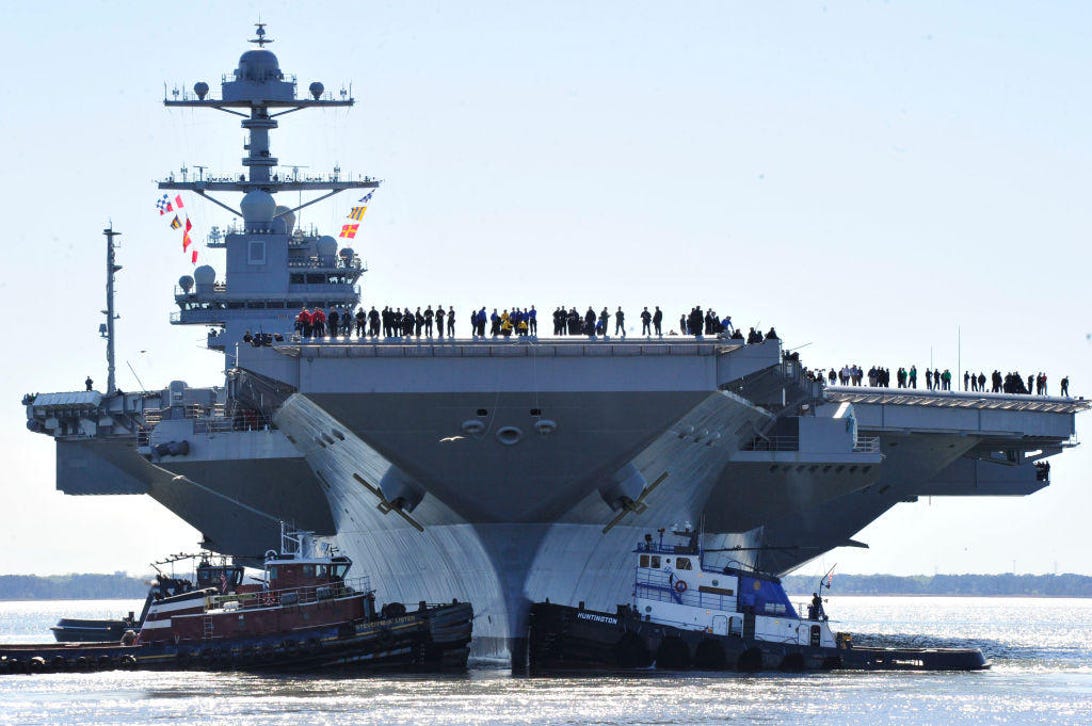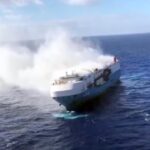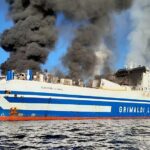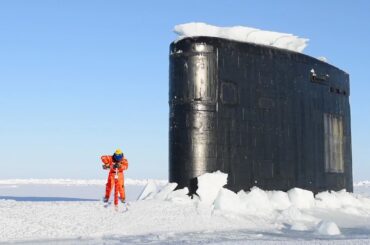Carrier U.S.S. Gerald R. Ford (CVN-78) is the first in its class. During World War II, the 38th President of the United States, Gerald Ford, saw action on Monterey’s light aircraft carrier in the Pacific Theater. The ship is named in honor of him.
A 15-ton plate that is part of the Carrier’s side shell unit was ceremoniously cut by Northrop Grumman on August 11, 2005, to kick off construction officially. On November 13, 2009, Gerald R. Ford’s keel was laid. On November 9 of last year, she was baptized. The decommissioned U.S.S. Enterprise (CVN-65), which had been in service for 51 years, was replaced by Gerald R. Ford in December 2012. Gerald R. Ford was initially slated for delivery in 2015 but was delivered to the Navy on May 31 and commissioned by President Trump on July 22. The Navy has stated that Carrier’s first deployment will occur sometime in 2022. She is the world’s largest aircraft carrier and the largest warship ever built in terms of displacement.

When Gerald Ford was still alive, Senator John Warner of Virginia presented an amendment to a 2007 defense spending bill, declaring that CVN-78 “must be called the U.S.S. Gerald Ford. “Congress senses that… CVN-78 should be called the U.S.S. Gerald R. Ford,” the final version signed by President George W. Bush on October 17, 2006, stated. The Navy was under no obligation to name the ship after Henry Ford because such “meaning of” wording usually is non-binding and does not have legal effect.
The announcement was made during a eulogy for President Ford at Grace Episcopal Church in East Grand Rapids, Michigan, on January 3, 2007, by then-US Secretary of Defense Donald Rumsfeld.
A few weeks before Ford’s death, Rumsfeld visited Ford at his Rancho Mirage home and personally informed him of the award. For the first time in American naval history, an aircraft carrier has been renamed after a living person. The Navy confirmed that the aircraft carrier would be named after the former President later in the day. CVN-78 USS Gerald R. Ford was renamed by Navy Secretary Donald Winter on January 16, 2007. The ship’s sponsor is Susan Ford Bales, Ford’s daughter. Bales, Ford’s other three children, Senators Warner and Levin, Major General Guy C. Swan III, and others attended the Pentagon ceremony when the announcements were made.

It was the U.S.S. America Carrier Veterans Association (C.V.A.) advocated for the ship’s name U.S.S. America. The C.V.A. is a group of sailors who served on the U.S.S. America and are members of the C.V.A. (CV-66). During a large-deck aircraft carrier damage test, the Carrier was scuttled in the Atlantic Ocean in 1996. It was instead U.S.S. America (LHA-6) was given the name “America,” an amphibious assault ship commissioned in 2014.
To replace the U.S. Navy’s Enterprise and Nimitz-class aircraft carriers, the Gerald R. Ford class is being developed. Ordered on September 10, 2008, the Gerald R. Ford (CVN 78) is planned to be delivered in 2016. When it comes to crisis response and early decisive strike power in a major combat operation, the Gerald R. Ford-class is the best. Gerald R. Ford-class aircraft carriers and strike groups will provide forward presence, deterrent, sea control, power projection, maritime security, and humanitarian assistance will be provided by Gerald R. Ford-class aircraft carriers and strike groups. Improved warfighting capability, a better quality of life for our sailors, and lower total ownership costs from the new class.

To put it another way, the new class of ships will save taxpayers $4 billion in total ownership expenditures throughout their 50-year service lives. Compared to CVN 68-class ships, the CVN 78 can operate with 700 fewer crew members. An improved design of the ship’s aircraft wing will reduce the number of troops on board by about 400. The crew’s duty is projected to be reduced through new technology and ship design elements. There are no steam service lines on Gerald R. Ford, so it requires less maintenance and better corrosion control than any previous aircraft carrier.

Thanks to modern technologies like the A1B reactor and EMALS, Advanced Arresting Gear (A.A.G.), and Dual-Band Radar (D.B.R.), reduced staffing is possible. To optimize carrier airpower, the Gerald R. Ford-class has been designed. The ship’s systems and configuration have been improved to maximize the sortie generation rate (S.G.R.) of the attached strike aircraft. New technologies, such as direct energy weapons, can be accommodated during the ship’s 50-year service life because of the ship’s design and power plant.







